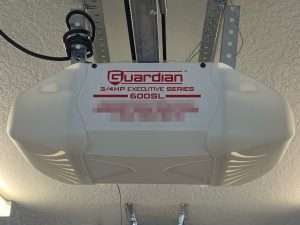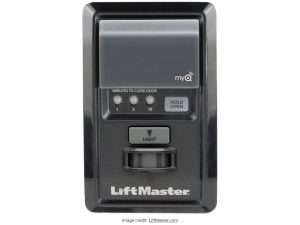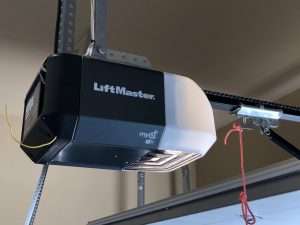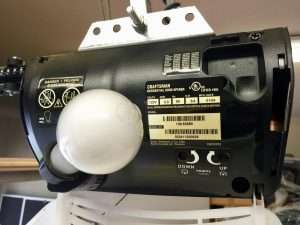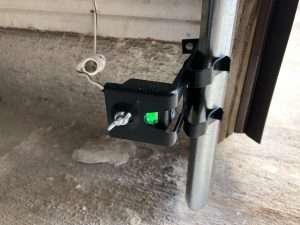Gap Around Your Garage Door? Replace the Weather Seal
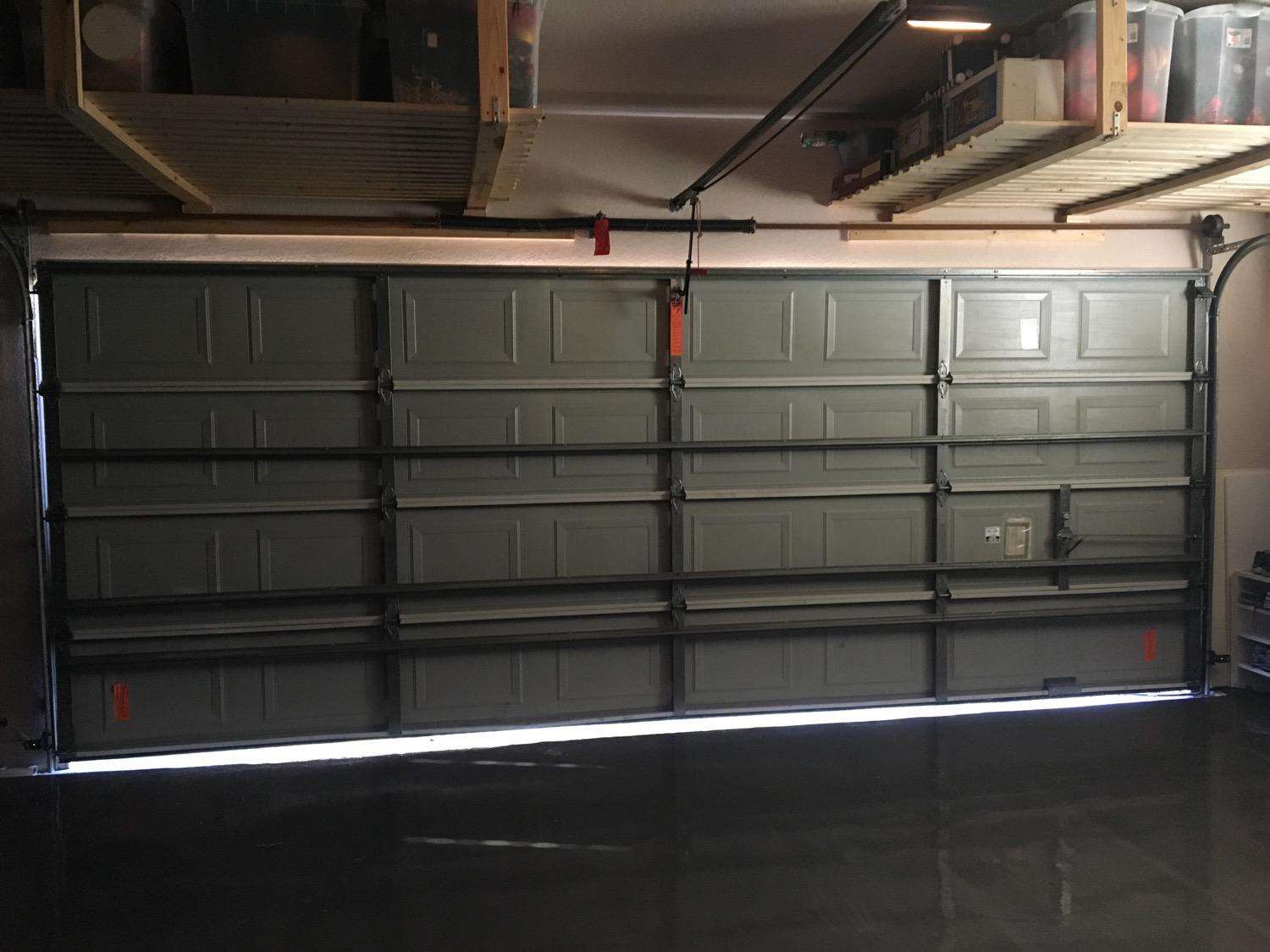
If you have a gap at the bottom or side of your garage door, it is most likely due to the bottom rubber weather seal deteriorating over time or the vinyl garage door seal may be missing altogether. This is one of the most common problems homeowners face when it comes to garage door maintenance. We are going to take a look at the different types of weather seal you can install at the bottom and around the opening of your garage door to keep out unwanted pests and debris.
In this article we will discuss the bottom garage door weather seal, vinyl weather seal for the garage door opening, weather seal for wood garage doors, and how to close up gaps when your concrete is uneven.
What Are the Different Types of Garage Door Seals?
The most common weather seals for garage doors are:
- Bottom weather seal
- Outside vinyl trim
- Garage door threshold
There are essentially three main types of garage door weather seals. First you have the bottom weather seal that is found on all metal garage doors and some wood doors. The bottom seal is what fills the gap between your garage door and the concrete floor as your door is closed. A good bottom weather seal will help keep out grass, leaves, rodents, snakes, and other debris.
The outside vinyl trim is what is installed around the jamb on the outside of your garage door opening. Vinyl trim has a flap that comes off the jamb at a 45 degree angle to create a tight seal against the garage door sections when the door closes. We go into great detail later on vinyl trim in this article and include photos as well.
A garage door threshold is a heavy duty piece of rubber that is attached to the floor where your garage door comes down and meets the concrete. This is specifically used when your concrete is uneven across the opening of your garage door. A permanent threshold can be laid down to fill the gap. We discuss this as well in greater detail later in the article.
Last, a new product has been introduced that fills the gaps at the bottom sides of your garage door on the outside which is called Garage Door Jambs Wraps. The next section goes into greater detail about this product.
Gaps on the Sides of the Garage Door
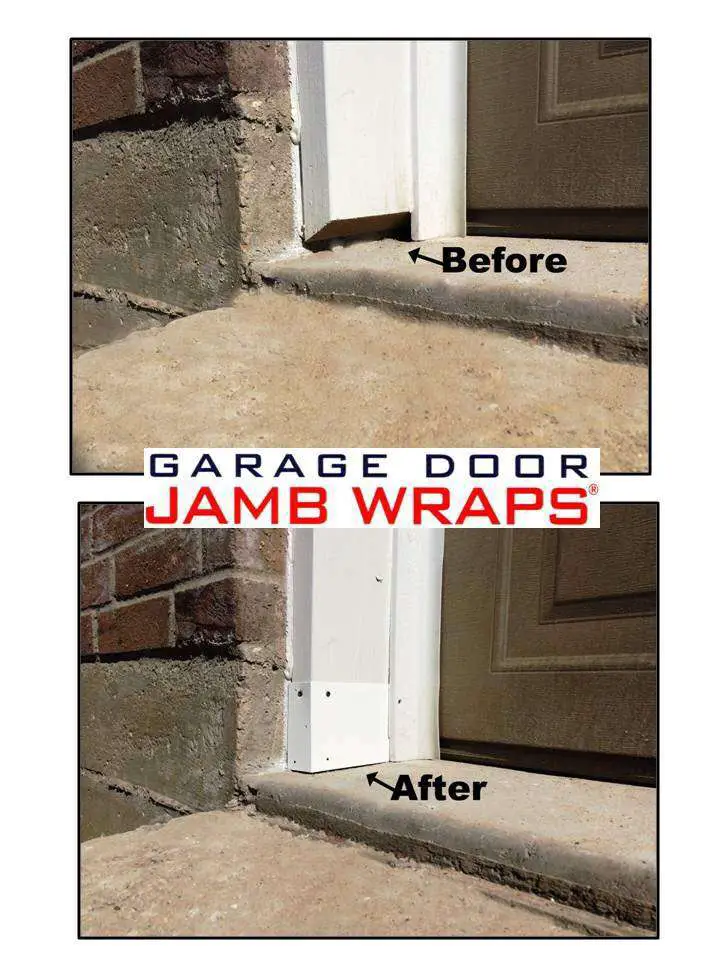
One of the most common questions we get from homeowners is “Why does my garage door have a gap at the bottom on the outside?”. The answer is simple. Because the 2×6 wood on the opening of your garage door is usually non-treated lumber, water has a tendency to wick up into the wood at the bottom causing it to rot. Builders started having the framers cut the bottom at a 45 degree angle to prevent this issue.
A local Texas company called Garage Door Jamb Wraps has come up with a solution to this problem. They have invented a piece of metal made from 22 gauge steel that attaches to the bottom outside of your garage door opening. This piece of metal protects your garage from rodents and other pests entering and debris from blowing in through the hole. This piece of metal acts as the perfect filler piece for the gap on the sides of your garage door.
Replacing the Garage Door Bottom Weather Seal

The bottom weather seal on a garage door will shrink and stiffen over time causing you to have gaps under your door. Typically, you will see a 3-4” gap on both ends of your garage door due to the rubber material shrinking. This is more prevalent in hotter climates and usually it takes a few years before you start to see the gaps.
Because garage doors spend most of the time in the down position, the bottom weather seal will flatten out and lose its shape. As this happens the seal between the bottom of your garage door and the concrete will lose its effectiveness, therefore requiring replacement. Weather seal will start to lose its pliability quicker in colder climates.
There are universal bottom weather seal kits that come with everything needed to replace the bottom seal on most garage doors. The kits include 18ft of bottom rubber seal and aluminum retainer along with the screws needed to attach it. You can use only the provided seal or install the aluminum retainer as well if needed. These kits are universal and will fit most garage doors on the market today.
This is the most common way to seal the gap between the garage door and floor at your home. Keep reading to find out some other options that might be better suited for your situation.
Longer 7” Bottom Garage Door Seal
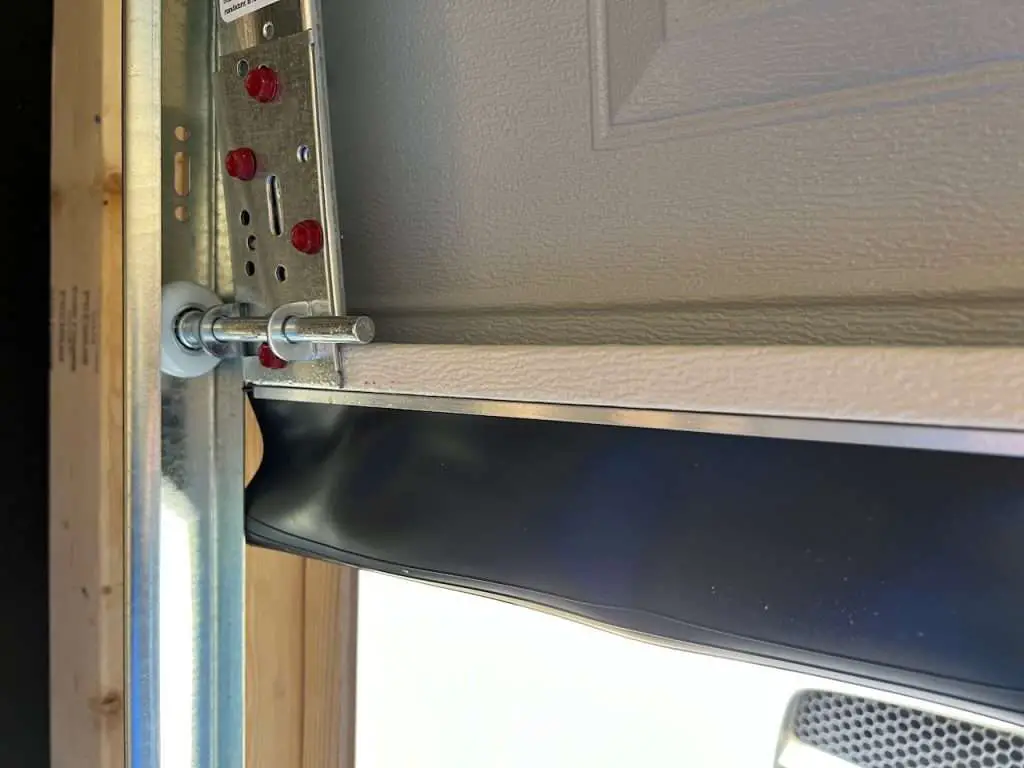
If you need a longer bottom weather seal on your garage door, they do make a 7” weather seal. This seal is much larger and hangs off the garage door around 3-4 inches to fill unusually large gaps under a door.

The photo above shows what the 7” bottom weather seal looks like when the garage door is closed. It creates a nice seal to the concrete in situations where there has been lots of movement or foundation issues.
Rodent Blocker Bottom Weather Seal

Rodents that enter the garage can cause thousands of dollars in damage. We have heard many first hand stories from homeowners where rodents have gained access into their home through the garage door. These pesky critters will eat the insulation off wiring in your vehicles and inside your attic and the walls of your home.
The reason the insulation is so enticing to rodents is because in recent years wiring insulation has been made of soy which is cheaper to manufacturer because we have so much in abundance. The soy insulation on wiring is driving this ongoing, very costly problem with vehicle wiring being destroyed.
A rodent proof bottom weather seal has been invented for garage doors that features a unique “XCLUDER” fill fabric that is designed to prevent rodents from gnawing through the seal to gain entry into the garage. This patented weather seal is great for residential homes as well as breweries, manufacturing facilities, or any commercial space that needs pest control.
What is the Seal Around My Garage Door Called?
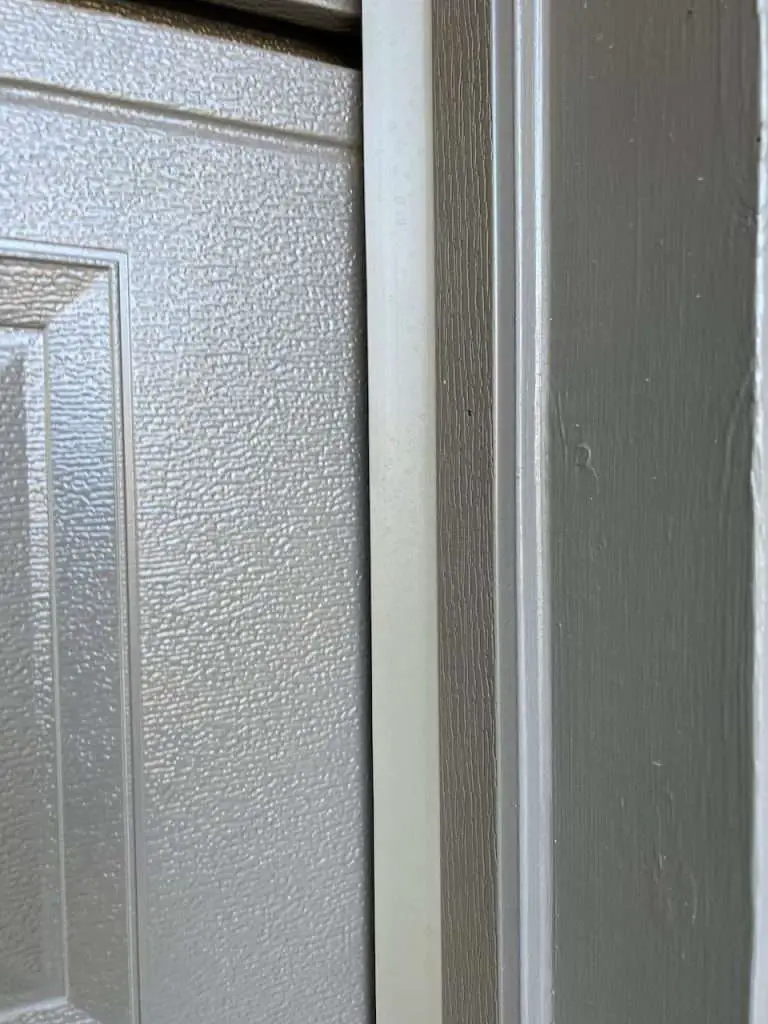
If you are referring to the trim piece with a flap that is commonly found on the outside of the garage door opening, that is called vinyl trim or perimeter seal. This is a product that is used exclusively for garage doors with a seal flap that comes off the trim piece at a 45 degree angle. As your garage door closes, the sections will push the flap outwards therefore creating a good seal. Vinyl trim is great at keeping out leaves, dirt, wind, rain, and any other debris from coming inside your garage.
Installing Vinyl Trim Around Garage Door Opening
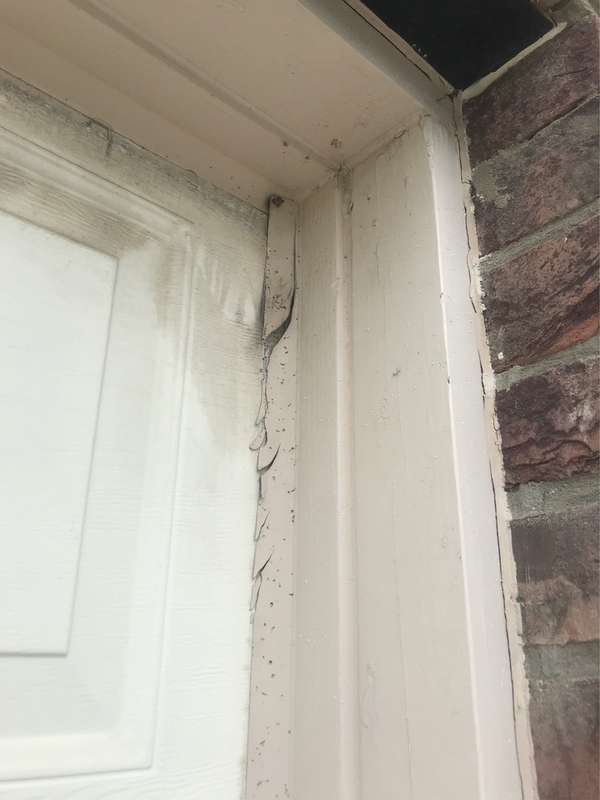
The first thing we need to determine is the type of trim you have installed on your garage door opening at the sides and top. Many builders install a 1×2 piece of wood to save money instead of the traditional vinyl trim that includes a weather seal. The wood trim does not offer any type of seal to prevent dirt and debris from blowing into the garage.
If you have wood trim around the opening of your garage door, you can remove it and replace it with garage door vinyl trim. The vinyl trim made for garage doors will not rot like wood and it has a seal that is angled toward the garage door so there is a tight seal as the door closes. This helps prevent wind, rain, and debris from blowing into the garage and also helps keep your garage warmer or cooler depending on the climate you are in.
Installation of vinyl trim is easy and can be done with finish nails and a hammer or using a pneumatic finish nailer preferably with galvanized nails. You want to make sure to use galvanized nails when attaching the vinyl trim to the jamb so the nails don’t rust and stain your trim. After the trim is installed you can caulk and paint it to match your home or the garage door. Be sure not to paint the back side of the vinyl trim as it could stick to your garage door and cause problems.
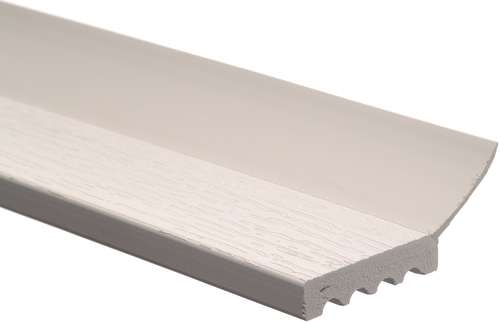
Garage door vinyl trim that can be used on all types of garage door openings and can be painted to match the home. The product is easy to install around the top and sides of your garage door opening. It stays flexible during cold temperatures, and helps keep out leaves, dust, and insects.
Uneven Concrete? Use a Garage Door Threshold
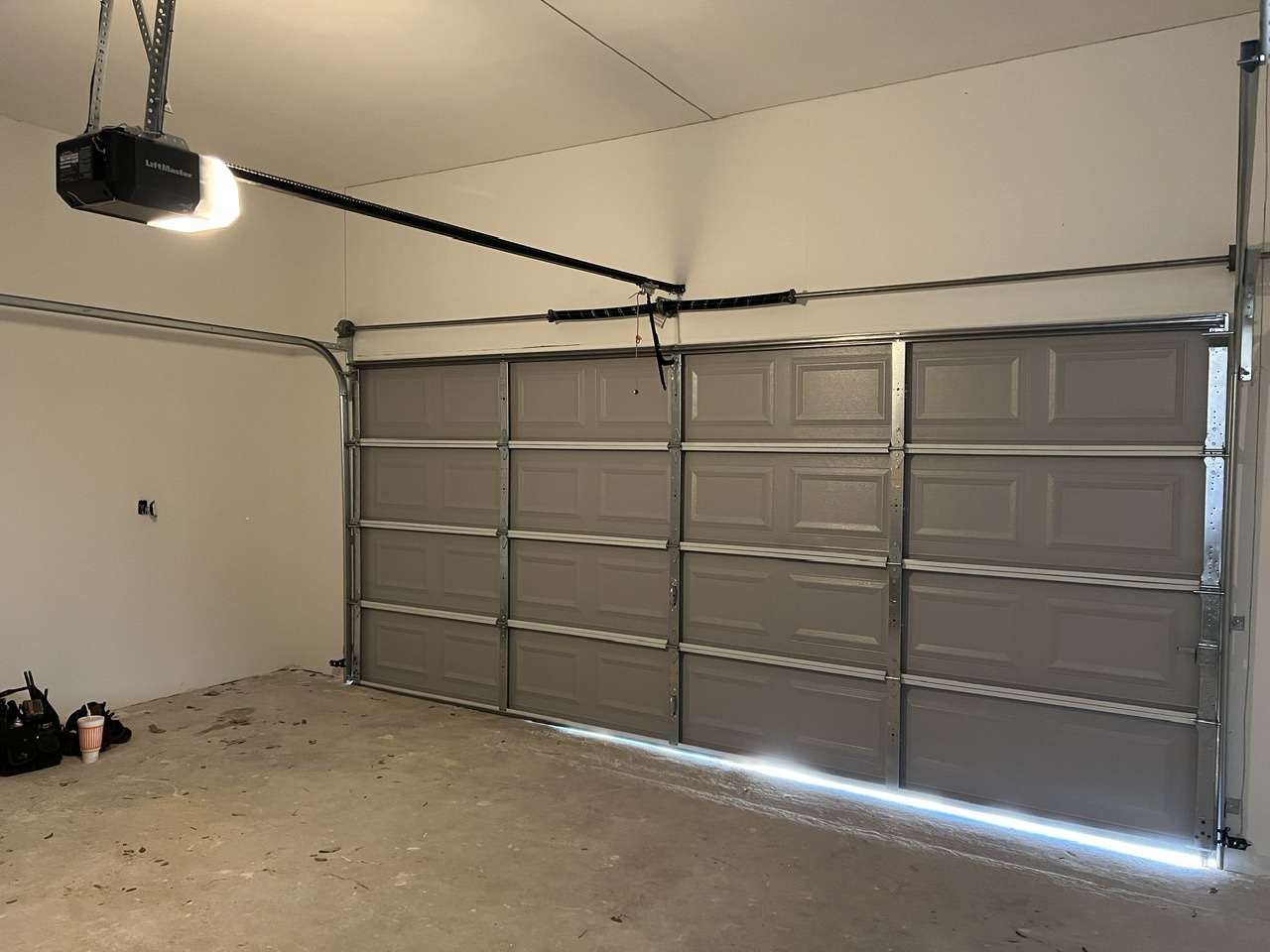
Many homes have uneven concrete where the garage door closes down due to how it was originally poured or the house may have shifted over the years. As this progresses you will start to see a gap under your garage door. This is because a garage door is supposed to be straight with the header. As you drive up to your home everyday, your eye will always see horizontal flaws before vertical.
If your home foundation has shifted and you now have a gap under your garage door, you can install a garage door threshold in the area where the gap is. A threshold is a durable vinyl seal that helps prevent draft, dirt, insects, and rain from entering under your garage door. The threshold can be cut down so you can install it only in the area where you have a gap. This will allow the garage door bottom weather seal to make contact with the threshold therefore eliminating any gaps you might have under the garage door.
A new garage door threshold will help in situations where you have uneven concrete. Installation is easy when using the supplied silicone adhesive and the product is durable enough to be driven over by a vehicle. Closing up the gap at the bottom of your garage door will keep out pests, debris, and draft air therefore making your home more efficient. It’s a win, win.
Bottom Weather Seal for Wood Garage Doors

If you have older wood garage doors, they will start to smile over time. What this means is the bottom left and right hand corner of the door will start to rise because that is where the tension cable is connected and all the force from the spring is pulling on the bottom section. You can’t do much about the sagging wood section because it is something that took years to create. You can, however, install weather seals and thresholds.
If you stand back and look at your garage door, you will notice it hits the concrete in the center first. There is not much you can do with the sagging wood section, but you can build it up with a garage door threshold or add nail-on wood door bottom weather seal.
Like we discussed previously, you can install a threshold where your garage door comes down and meets the concrete. Garage door threshold is great because you don’t have to use it all the way across your door opening. You can attach it to your concrete where there are gaps and that will provide a seal between the door and the concrete.
If you choose to install a weather seal on the bottom of your door, they make a weather seal for wood garage doors that is nailed to the bottom to provide a better seal. This weather seal is designed specifically for wood garage doors and is designed to be attached with galvanized nails. The seal is more of a flat design and it has an angled flap that is supposed to be installed outwards to prevent water and debris from blowing under the garage door.
How Much Does It Cost to Replace Garage Door Seals?
Bottom Weather Seal
If you’re needing the bottom weather seal replaced on a standard 16×7 garage door, you can expect to pay anywhere from $120-$180 depending on where you’re located. That price should include the service call, parts, and labor. Of course the price is dependent on whether or not the weather seal is in stock or a special order.
Aluminum Retainer
If the bottom retainer on your garage door needs to be converted to a newer style, you can expect to pay an additional $70-$100 for an aluminum retainer. The price of aluminum has skyrocketed in recent years.
Outside Vinyl Trim
If you are looking to have the outside vinyl trim replaced around the garage door opening, you can expect to pay anywhere from $150 to $250 depending on the color you choose. Standard colors will be on the low end while newer trendy colors tend to be more pricey. These prices should include the service call, parts, and labor.
Conclusion
Installing new bottom weather seals along with outside vinyl trim on the sides and top of your garage door opening will drastically improve the efficiency and cleanliness of your garage. Because newer neighborhoods are being built on old farm land, homeowners are seeing a rise in rodents and snakes now entering into their garages.
Replacing old garage door seals will go a long way in providing you the peace of mind from having to be confronted by curious reptiles and less sweeping after the lawn guy blows off your neighbors driveway.
